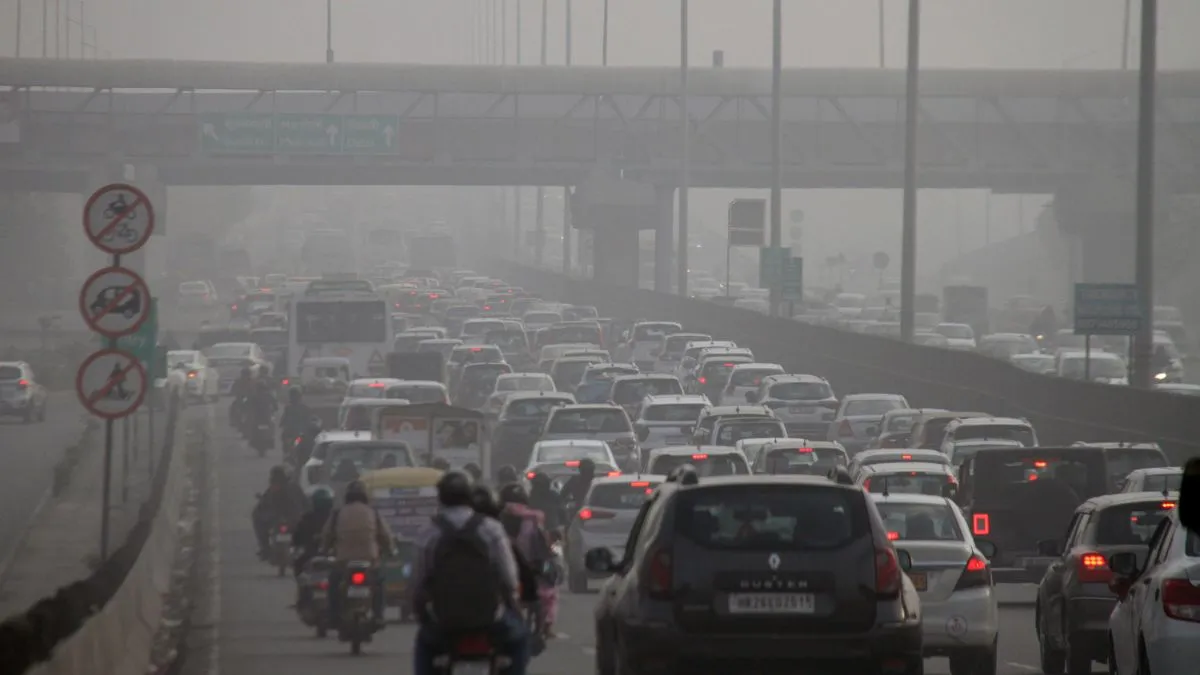Delhi’s air quality has been consistently deteriorating, posing a significant health risk to its residents. While Thursday saw an AQI of 285, classifying the air quality as “poor,” a sharp increase to potentially “very poor” conditions is imminent. This alarming trend is predicted to persist for at least the next three days, according to the Central Pollution Control Board (CPCB). The rapid escalation of pollution levels, with a 55-point jump in just 24 hours, underscores the urgent need for effective mitigation strategies. Fifteen areas within Delhi have already breached the “very poor” AQI threshold, highlighting the widespread nature of this environmental crisis. The situation is further complicated by the fact that even with a slight decrease in pollution from stubble burning in neighboring states, local factors are still primarily driving this alarming surge in air pollution. This necessitates a multifaceted approach focusing on local pollution sources, alongside broader regional collaborations to address the contributing factors.
The Current State of Delhi’s Air Quality
AQI Readings and Trends
The CPCB’s Air Quality Bulletin reveals a concerning upward trend. Delhi’s AQI jumped from 230 on Wednesday to 285 on Thursday, a significant increase indicating rapidly worsening air quality. The situation is particularly critical in specific areas, with 15 locations already experiencing “very poor” air quality, implying serious health implications for residents. Anand Vihar, for instance, experienced a severe AQI of 439 on Wednesday, although this decreased slightly to 419 on Thursday. However, the overall trend points towards a persistent deterioration, with predictions suggesting little improvement in the coming days. This signifies a substantial and imminent threat to public health, demanding immediate and decisive action.
Sources of Pollution in Delhi
While stubble burning in Punjab and Haryana has historically been a major contributor to Delhi’s pollution, the current surge seems less attributable to this external factor. This shifts the focus towards local sources as the primary drivers of the deteriorating air quality. Vehicle emissions, industrial activities, and construction dust are consistently identified as key contributors to Delhi’s pollution woes. These sources release a cocktail of harmful pollutants that contribute to the overall poor air quality. Addressing these local pollution sources is critical to alleviating the ongoing health crisis and creating a more sustainable future for Delhi’s population. The city’s rapid urbanization and growth must also be managed in such a way as to avoid exacerbating the issue in future.
The Health Impacts of Delhi’s Air Pollution
Respiratory and Cardiovascular Risks
The consistently poor air quality has severe implications for public health. Exposure to high levels of pollutants, including particulate matter (PM2.5 and PM10), causes various respiratory illnesses like asthma, bronchitis, and pneumonia. Moreover, it contributes to cardiovascular problems, including heart attacks and strokes. Children, the elderly, and individuals with pre-existing health conditions are particularly vulnerable to these harmful effects, underlining the need for urgent intervention to reduce pollution levels. Continued exposure to toxic air puts substantial stress on the city’s healthcare systems and necessitates more effective preventative measures to address this ongoing and major public health issue.
Long-Term Health Consequences
Beyond immediate health risks, long-term exposure to polluted air can lead to chronic diseases and reduced lifespan. Studies have established links between prolonged exposure to air pollution and an increased risk of lung cancer, heart disease, and other chronic illnesses. This impacts not only individual health but also has significant societal consequences through increased healthcare costs and loss of productivity. Comprehensive action, encompassing pollution control, awareness campaigns, and access to quality healthcare is necessary to mitigate the long-term damage already being caused. These multifaceted measures need to be implemented strategically and effectively, making proactive healthcare measures vital to preventing major future issues.
Mitigation Strategies and Government Actions
Current Restrictions and Measures
In response to the deteriorating air quality, the government has implemented several measures, including restrictions on construction activities and the movement of trucks. These are aimed at curbing local pollution sources during this period of increased risk to public health. The implementation of GRAP (Graded Response Action Plan) Stage 4 demonstrates recognition of the gravity of the situation and the need for urgent intervention. Further discussion and analysis will assist in refining measures. However, the immediate and substantial level of restrictions highlights the immediate level of threat currently posed to the city’s health.
Long-Term Solutions and Policy Changes
Addressing Delhi’s air pollution requires a long-term strategy that includes strengthening regulations, promoting cleaner fuels, and investing in public transportation. Transitioning towards renewable energy sources and sustainable urban planning are also crucial components of any comprehensive solution. Collaborative efforts between the government, industries, and individuals are essential to make real change. Encouraging the adoption of cleaner technologies and enforcing existing environmental regulations will drastically decrease the severity of future issues. Collaboration on these points between the aforementioned parties will help in bringing the necessary legislative changes, allowing more effective pollution control. Continuous review and adaptation of measures are required to ensure ongoing improvement in long term environmental health.
Take Away Points:
- Delhi’s air quality is rapidly deteriorating, posing a significant threat to public health.
- Local sources of pollution, including vehicle emissions and construction dust, are primarily responsible for the current surge.
- The health consequences of air pollution are severe, ranging from acute respiratory illnesses to long-term chronic diseases.
- The government has implemented various measures, but a long-term strategy incorporating stricter regulations, cleaner technologies, and sustainable urban planning is crucial.
- A multifaceted approach involving collaboration between government, industries, and citizens is needed to address this ongoing crisis and improve Delhi’s air quality permanently.




